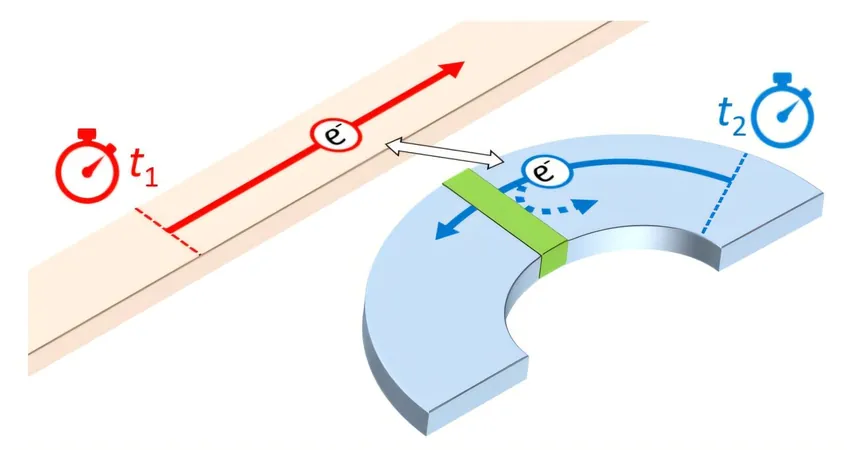
Revolutionizing Reef Restoration: The Future Lies in Coral Fusion and Microbiome Science
2025-05-22
Author: Ming
A Groundbreaking Approach to Coral Conservation
In an exciting new study by scientists from the University of Guam Marine Laboratory, a bold framework has emerged that promises to reshape reef restoration efforts. Titled "Restoration Innovation: Fusing Microbial Memories to Engineer Coral Resilience," this research, featured in the journal One Earth, highlights the critical need to blend fundamental biology with real-world applications in restoration ecology.
Confronting the Coral Crisis
Guam’s waters have been plagued by severe bleaching events attributed to rising ocean temperatures. In response, these dedicated researchers are diving deep into the intricacies of marine ecosystems to protect our planet's precious coral reefs. They’ve discovered that much remains unknown about the basic biology of corals, complicating restoration efforts.
Unlocking the Mysteries of Microbiomes
While it’s widely accepted that corals thrive in a symbiotic relationship with varied microorganisms, including algae and bacteria, the details of these interactions are still shrouded in mystery. The study's lead author, Colin Anthony, emphasizes the importance of understanding these dynamics for fostering coral resilience: "Our research is not just academic; it's a rallying cry for scientists to blend disciplines, fill knowledge gaps, and create innovative strategies for sustainable restoration."
A Unified Theoretical Framework
The research marks a pioneering attempt to synthesize coral microbiology, fusion, fragmentation, and environmental resilience into a cohesive theoretical model. This approach aims to equip coral restoration ecologists with the insights needed to combat the impacts of climate change more effectively.
Inspired by Success Stories
The researchers drew inspiration from the Raymundo Coral Lab, which has seen success in cultivating Guam's staghorn Acropora species across expansive coral nurseries. Notably, these nursery-cultured corals exhibit unique morphologies, physiologies, and microbiomes distinct from those found in the wild.
Enhancing Restoration with Fusion and Fragmentation
With a focus on Guam's most endangered staghorn corals, the team is actively experimenting with fusion and fragmentation techniques to boost restoration success. Anthony notes, "We are rigorously testing integrative restoration methods on critically endangered staghorn corals in Guam."
Collaboration Beyond Borders
In their pursuit of new knowledge, both Anthony and collaborator Dr. Héloïse Rouzé have relocated to continue their research, with plans to remain closely connected with Dr. Laurie Raymundo's team in Guam. While Anthony is exploring coral symbiosis at the University of Tokyo, Rouzé is implementing similar frameworks in Mayotte as part of the French National Research Institute for Sustainable Development.
A Future Full of Possibilities
The implications of their proposed framework are vast, indicating a spectrum of potential outcomes that underline the necessity for ongoing studies into coral interactions with their endosymbiotic communities. The innovative synergy of these scientific pathways could very well be the key to securing the future of the world's reefs.


 Brasil (PT)
Brasil (PT)
 Canada (EN)
Canada (EN)
 Chile (ES)
Chile (ES)
 Česko (CS)
Česko (CS)
 대한민국 (KO)
대한민국 (KO)
 España (ES)
España (ES)
 France (FR)
France (FR)
 Hong Kong (EN)
Hong Kong (EN)
 Italia (IT)
Italia (IT)
 日本 (JA)
日本 (JA)
 Magyarország (HU)
Magyarország (HU)
 Norge (NO)
Norge (NO)
 Polska (PL)
Polska (PL)
 Schweiz (DE)
Schweiz (DE)
 Singapore (EN)
Singapore (EN)
 Sverige (SV)
Sverige (SV)
 Suomi (FI)
Suomi (FI)
 Türkiye (TR)
Türkiye (TR)
 الإمارات العربية المتحدة (AR)
الإمارات العربية المتحدة (AR)